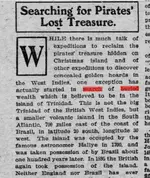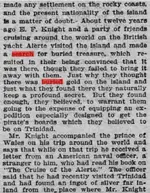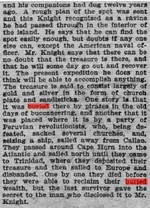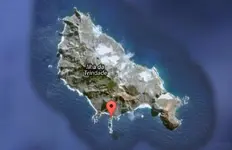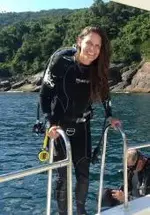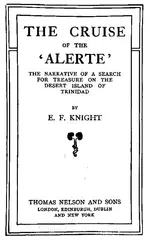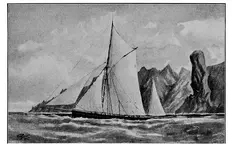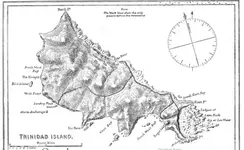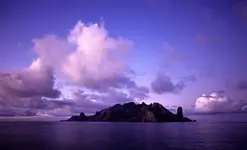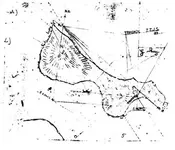Hello Freeman
The problem I have with is no real Provence with the map. I am not trusting of claims the map was found in 1852 and allegedly found in India. We trawled through records in India and London shipping records of crew lists. Death records plus newspaper obituaries. And records going back to between 1848 and 1852's where is was compulsory to record deaths of crew members. Nothing..... So the map may not be as old as many claimed. The map versions as far as I am aware appeared in the Brazilian papers in the late 1940's
The alleged original document written by the alleged pirate "Zulmiro" giving the details of the treasure and location below.
The treasure is hidden in an island called Trindade 647 miles off the coast of Brazil, in two distinct places: in the former there is gold in powder, in bars, in coins of several countries, as well as precious stones of great value. The value of this deposit can be estimated at 5 million pounds. The other deposit, although larger, is not so valuable and consists of artistic works in gold and silver, as well as 63 bars of massive silver, with dimensions of 6x2x4 inches, the result of many years of piracy. The richest deposit is near the waterfall. On the left side of this, 3 feet from the large stone, the second stone is at an angle of 32 to the southwest, there is a closed cavity, but it can be easily opened, in which are 19 volumes of great value and different sizes.
Another deposit is in the south bay, on the eastern end of the island to the north side of the sugar loaf, under the central stone of the five existing there. The waterfall is situated on the south side of the island, about 2.5 from the West end within walking distance of the beach. It is easy to find because it is below a depression in the mountain range that forms the bottom of the landscape, facing the best place to merge on the south side, despite being exposed to all the winds that blow from there. In the bay of the extreme south, a schooner finds an anchorage, even near the beach, at any time, with little work and some skill, to run aground its boats. There is a canal near the sugar loaf, which is distinguished from a rocky culmination that passes between this and 2 islands of stones on the side of the sugar loaf. There are 5 large stones marking the treasure that are above the entrance of the cave, which is 5 degrees and 30 minutes northwest of the sugar loaf. When sighting the island of the South a depression in the mountain chain easily attracts the attention and, in the mouth of the stream, a boat can be safely run aground.
The 19 volumes consist of: 11 barrels filled with coins, 2 large open boxes containing 81 small gold bars, 1 watch case full of jewels, 12 sealed leaden bags containing precious stones, 1 tea box full of disassembled jewelry and 2 boxes of leaves full of gold dust. As for the other deposit the hiding place is situated inside the grotto, and consists of 3 large rooms cut in the hard ground and crossing the grotto; to the course of 5 degrees and 30 minutes to the northwest and in the distance of 300 yards are the 5 stones, of which the central one rests on the other 4 and form a quarter of 3 sides. The entrance is on the west side, and all volumes of large size are hidden in the barn, piled one upon the other into barrels, barrels, boxes, and coffins, which occupy almost every room. Its artistic value is incalculable, its intrinsic value being about 3,000,000 pounds.
In a round can there are depository documents that are valuable only to their rightful owners and who currently avail themselves of the Bank of England. The treasure will not be found without this description. Its artistic value is incalculable, its intrinsic value being about 3,000,000 pounds. In a round can there are depository documents that are valuable only to their rightful owners and who currently avail themselves of the Bank of England. The treasure will not be found without this description. Its artistic value is incalculable, its intrinsic value being about 3,000,000 pounds. In a round can there are depository documents that are valuable only to their rightful owners and who currently avail themselves of the Bank of England. The treasure will not be found without this description.
in 1949, the Belgian engineer who lives in Brazil, Paul Ferdinand Thiry came along became obsessed with story , after much research the subject, allegedly deciphered one of the marking on the map drawing and said that there indicated island was Ilhabela located on the north coast of the State of São Paulo. He reworked maps adding calculation and directions adding up the treasure being on Ilhabela below.
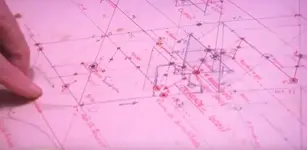
After obtaining the support of the Brazilian Navy , Thiry went to Ilhabela and began the field research in the area known as Saco do Sombrio . Between comings and goings, Thiry persevered for thirty years in search of the hiding place of the treasure. Thus the alleged claims of buried treasure reveled in 1880's went from Trindade Island to Ilhabela in 20th century thus transferring the treasure legend from one location to another.
E F Knight did not know the exact details of the alleged treasure so he invented his own. Thus we have treasure from Peru.
Like with many treasure legends too many later people added things as so called "fact" to this taking the entire story out of proportion from the earliest claims to what we have to day accumulating in that silly TV show snake island.
Kanacki
